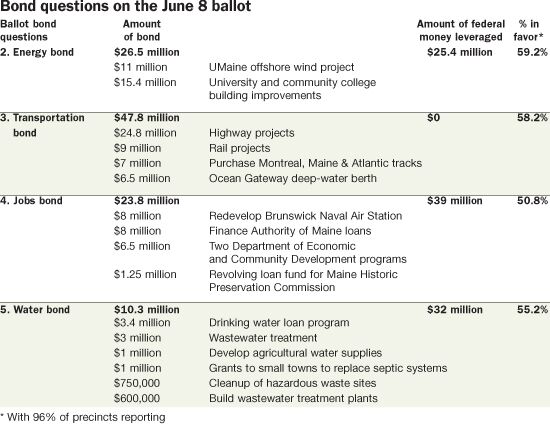Economists and others who study state finances can’t seem to agree on the state of state spending in Maine.
So what’s the truth? It depends on whom you ask. Either state spending is out of control or it’s very conservative. Government debt from bonds alone is either unmanageable or carefully and responsibly being repaid.
A recent study by the American Enterprise Institute ranked Maine 11th worst in the nation for its debt as a share of state gross domestic product. Moody’s Investors Service, meanwhile, ranks Maine 29th in the nation in net tax-supported debt as a percentage of state GDP.
According to the AEI study, while debt related to outstanding bonds looks manageable, a closer look at the numbers reveals an area of particular concern: Maine’s unfunded pension obligations. AEI suggests any shortfalls in Maine’s pension fund would most likely be covered by public funds from another source, such as revenue from new or higher taxes.
Given this likelihood, AEI suggests, fair market value of those pension obligations is a truer measure of the state’s liability. Currently, states are not required to disclose the market value of their pension obligations.
However, Christopher St. John, executive director of the Maine Center for Economic Policy, disagrees with this assertion. He points instead to another study, conducted by the Pew Center on the States, which rated Maine’s pension funds a “solid performer,” the highest rating possible.
“The market-based approach [used in the AEI study] is not commonly used by people in the bond business,” he says. “Looking at the Pew study, which gives a more accurate picture, you see that Maine is better funded than most states. In truth, Maine’s pension fund has improved substantially over the last 20 years, as we’ve been successful in building up the reserves.”
Even bond ratings agencies can’t seem to agree on Maine’s financial health, although they do come closer to agreement than economists. Standard & Poor’s recently gave Maine an AA rating, but with a negative outlook based on the state’s “weakened financial position and diminished liquidity.” The two other ratings agencies Maine uses — Moody’s Investors Service and the National Association of Insurance Commissioners — see things differently. Moody’s rates the state’s bonds as stable, while NAIC gave the state its top rating, saying Maine’s obligations are “exhibiting the highest quality.”
J. Scott Moody, an economist with the Maine Heritage Policy Center, recently wrote his own report on Maine’s bond situation. Moody concluded the state will need to either reduce spending or raise taxes to cover its debt obligations. Maine’s government employee pension and retiree health care systems are underfunded by nearly $5.1 billion, he says. This makes the systems, in his opinion, unsustainable at present. The problem lies with the “discount rate” Maine uses to analyze its pension assets, which he says is unrealistically high, which was also noted in the AEI study.
“More disturbing, however, is that stated unfunded pension liabilities are being dramatically underestimated,” Moody writes in the study. “Two economists find that using more realistic, lower discount rates yields estimates for Maine’s total pension liability increases … to a whopping $24 billion.
“Unfortunately, higher unfunded liabilities means that current annual contributions are insufficient to meet future benefit obligations,” the study concludes.
Ryan Low, commissioner of the Maine Department of Administrative and Financial Services, says both MHPC’s and AEI’s studies miss the mark. Pointing to state budget statistics he provided, Maine’s tax-supported debt service is on pace to rise slightly through 2012, then taper off annually until 2024, when it will be all but nonexistent. “Maine has been very conservative with debt management, especially when you compare it to New Hampshire and Vermont,” Low says.
This conservative approach is evidenced through a look at how Maine’s unfunded liabilities have been funded historically, Low says. In 1991, only about 36% of the total was funded. Today, according to the Pew report, that number has risen to nearly 80%. And, he says, despite claims to the contrary, state spending has been and remains on pace to remain at a manageable level.
“The reality is that state government spending for fiscal year 2011 [which begins on July 1] is the same as it was in 2001,” he says. “We’re also going to see the third consecutive year of a year-over-year spending decrease.”
In late May, Maine sold $58.2 million in bonds at an interest rate of 2.2%, a low cost of borrowing that the state treasurer attributed to the state’s strong credit reputation, the limited supply of Maine bonds and other factors, according to the Associated Press.
Based on the national economy, the state of the bond market in general and the rural nature of Maine’s economy, financial challenges are to be expected, St. John says. But that doesn’t mean Maine is in dire straits, as some have suggested.
“As a small, rural state with lots of roads to maintain, we know we’re going to have a slightly higher than average cost of government than other states,” he says. “We may not be entirely out of the woods, but compared to other states, we’re in pretty good shape.”
